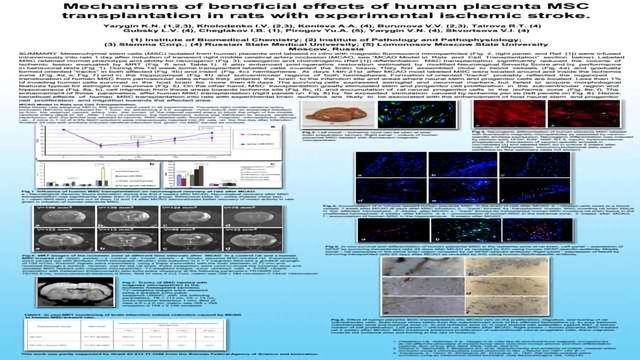Latest Posters

Poster
Microcarrier based production of cryopreserved cells
The use of cellular assays in drug screening continues to grow with over 50% of primary screens using cell based formats in 2006. The majority of cells used in the drug discovery industry are fresh, using ‘just in time’ batch processing from in house facilities. This process could give rise to a number of issues, namely batch variation, scheduling of cell production and capacity management. We describe the use of microcarrier technology in combination with a suitably configured bioreactor to pro

Poster
Smart Solutions in drug discovery
Here we present data on the development of a large scale production process for the provision of two different cryopreserved transiently transfected cell lines. Included is identification of a suitable transfection reagent that is efficient, non-toxic and cost effective. This process has been validated using these two cell lines and two different cell-based assays.

Poster
The application of microcarrier technology for the provision of receptor membranes for high-throughput screening
The recent growth in cell use for drug discovery, particularly for high-throughput screening (HTS), has posed a number of challenges including batch performance, cell production scheduling and capacity management in response to the increasing demands for cells and assay components derived from cells (e.g. membrane fractions).

Poster
Quality Tools and their Application in the Production of Cellular Reagents for Screening Assays.
The use of mammalian cell based assays in compound screening continues to grow. Over 50% of all screening assays (HTS and HCA) now utilise cells or cell derived reagents.

Poster
Protein array-based screening of autoantibody signatures
The evidence for an association between autoimmune diseases and chronic HCV infection has been clearly established. To this aim, a protein array was employed to analyze serum samples of HCV patients w/wo autoimmune complications, of patients with autoimmune hepatitis but not infected with HCV and of healthy donors as controls. A panel of autoantigens able to discriminate among the three groups of patients was identified for potential use as biomarkers.

Poster
Clinical Evaluation of human embryonic stem cells (hESCs) induced with directed differentiation to gonadotrope cells to cure vasculogenic impotency and to improve coital frequency in males. An open st
This work demonstrates the clinical efficacy, tolerability and safety of patient-syngenic hESC induced with directed differentiation to gonadotrope cells. Hypothalamus transmits gonadotropin releasing factor to pituitary that sets off LH and FSH to Sertoli cell and Seminiferous tubule resulting Leydig cell to produces testosterone. This potential offers a rationale to evaluate hESCs to cure patients with vasculogenic impotency and to improve coital frequency in males.

Poster
Clinical Evaluation of induced pluripotent stem cells (iPSc) to cure patients with Psoriasis Vulgaris. An Open Study.
To evaluate the clinical efficacy of iPSc directed to interfere T-cell activation to cure patients with psoriasis. Twenty subjects were enrolled. Each patient was administered iv with syngenic iPS. Those showing lower PASI score were considered cured. The study states that induced iPSCs are safe and impart significant clinical efficacy to cure patients with psoriasis.

Poster
Five noncovalent peptidic ligands show different affinity rankings in solution and gas phase
Stability of noncovalent complexes of VEGF protein with 5 peptidic ligands is studied. Experiments were conducted in solution (NMR CSP, ITC) and in gas phase (CID TOF MS). Each ligand differs from others in chirality of one amino acid. It was shown, that trend of stability of the studied noncovalent complexes is reversed in the gas phase relatively to the solution. An explanation of this behavior is presented.

Poster
Mechanisms of beneficial effects of human placenta MSC transplantation in rats with experimental ischemic stroke
Human MSC transplantation significantly reduced the volume of experimental ischemic lesion in rat model. It also greatly stimulated stem and progenitor cell proliferation in the subventricular region and hippocampus and cell migration from these areas towards the ischemia site. Beneficial effects of MSC in rats with brain ischemia are likely to be associated with enhancement of host neural stem and progenitor cell proliferation and migration towards the affected area.

Poster
Synthesis and trafficking of the tonoplast potassium channel AtTPK1
Sorting signals of tonoplast proteins and the pathway they follow through the endomembrane system are still poorly characterized. Using Brefeldin A (an inhibitor of the Golgi-mediated traffic) we showed that a Golgi-dependent pathway for tonoplast delivery may exist. Then we generated various chimeric TPK1-TPK4 fusions, exchanging various domains. We observed that the cytosolic, C-terminal domain of TPK1 is sufficient to re-direct the plasma membrane TPK4 to the tonoplast.
Advertisement

